Sengai Gibon and Rinzai Buddhism: Artistic Outreach and Buddhist Contemplation
Lee Jay Walker
Modern Tokyo Times
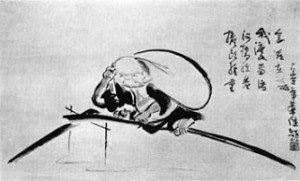
The inner-soul of Sengai Gibon (1750-1837) was always multidimensional and the flow that linked all fusions was Buddhism. Artistic wise, we will never know the real capabilities of Sengai because his art and writings were based on simplicity, enticing the viewer, and drawing people to the bigger picture. Of course, the sophistication of the written word was based on greater clarity. In the opposite direction, his art was based on a mixture of simplicity and intrigues that questioned the real meaning.

Indeed, given some of the complex aspects of Rinzai Buddhism, he took it upon himself to simplify the faith to lay people and outsiders alike. However, his attitude wasn’t always appreciated because aspects of his writings and teachings drew controversy. Despite this, Sengai did not desire to be constrained and likewise, the passages of time meant that his new reach out embraced the artistic world of sumi-e.
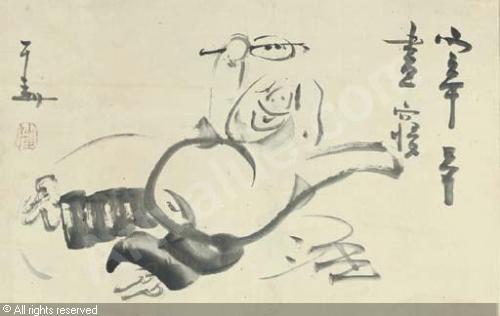
Sengai said, “My play with brush and ink is not calligraphy nor painting; yet unknowing people mistakenly think: this is calligraphy, this is painting.”
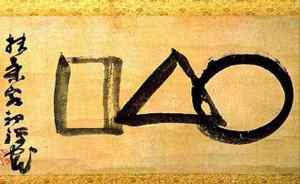
The above statement says much about Sengai for his real focus was Rinzai Buddhism rather than following a conventional approach to art and calligraphy. Not surprisingly, therefore, his sumi-e art equally followed a similar intrigue where the meaning often appeared distant based on simplicity. However, in truth, the simplicity was instrumental in drawing people in by searching for “the real meaning.”
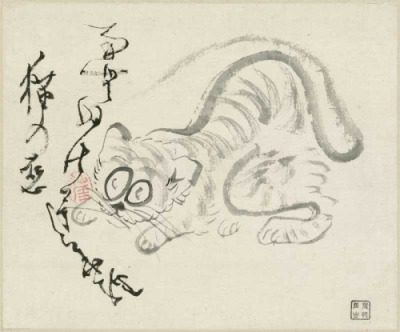
Of course, it may be that “the real meaning” was sometimes based on being meaningless – while, on other occasions, the objective was well thought even if the answer was based on each individual. Either way, it is clear that Sengai understood the need to reach out to ordinary people while igniting new ideas among individuals belonging to the upper echelons of society.
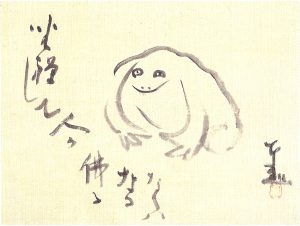
I stated in another article, “The individualistic nature of Sengai Gibon meant that he focused on art from a unique angle outside of the trappings of high culture. Given this reality, humor became fused within his art, philosophy, and following the right path. However, just like the right path in Buddhism – or any major religion – he bestowed this virtue based on free will, alternative thought concepts, and challenging the individual to see reality through a vision of unreality.”
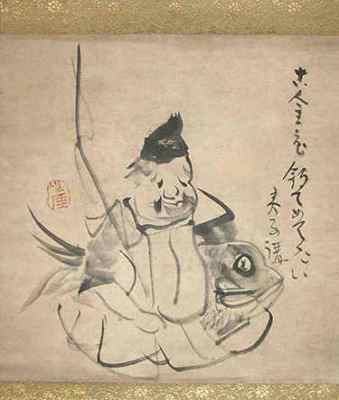
Interestingly, the academic circles and art schools of the day that existed did not warrant too much importance to Sengai. After all, the central theme for Sengai was Buddhism, the search for enlightenment, the acknowledgment of his fleeting time on this earth, to reach out to all irrespective of status, and to find all the unfathomable answers based on free will and extreme inquisitiveness.

Modern Tokyo News is part of the Modern Tokyo Times group
DONATIONS to SUPPORT MODERN TOKYO TIMES – please pay PayPal and DONATE to sawakoart@gmail.com
http://moderntokyotimes.com Modern Tokyo Times – International News and Japan News
http://sawakoart.com – Sawako Utsumi personal website and Modern Tokyo Times artist
https://moderntokyonews.com Modern Tokyo News – Tokyo News and International News
http://global-security-news.com Global Security News – Geopolitics and Terrorism
PLEASE JOIN ON TWITTER
https://twitter.com/MTT_News Modern Tokyo Times
PLEASE JOIN ON FACEBOOK
https://www.facebook.com/moderntokyotimes
Some art and cultural articles by Modern Tokyo Times are republished to highlight the unique traits of Japanese culture to our growing readership.